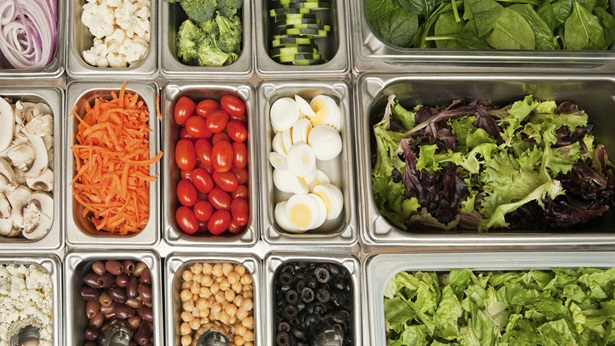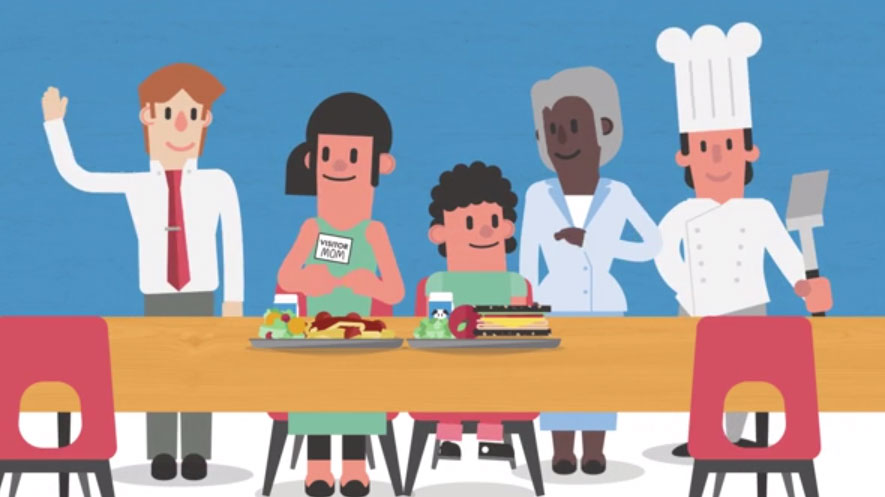8 in 10 Mississippi Voters Support Healthy School Food Standards
Three years after nutrition standards were strengthened for the national school lunch and breakfast programs, a Mississippi poll released today by the Kids’ Safe and Healthful Foods Project reveals that 80 percent of voters and 76 percent of parents who are registered to vote and have children in the state’s public schools favor the current guidelines.
Pollster Memo (PDF) | Full Results (PDF)
Support for School Meal Standards Crosses Party Lines
We asked:
Do you favor or oppose requiring public schools to meet these national nutrition standards for school meals?
| % Favor | |
| Registered voters | 80 |
| Republicans | 69 |
| Independents | 81 |
| Democrats | 93 |
Source: Mississippi School Nutrition Survey, February 2015
The survey also shows broad support for current requirements that school meals include a serving of fruits or vegetables, provide foods made from whole grains, and limit sodium.
Key Nutritional Improvements Get Strong Support
We asked:
Do you think public schools should be required to do the following with every school meal? And do you feel strongly about that?
Include a serving of fruits or vegetables
| % Yes | (Strongly) | |
| Registered voters | 96 | (90) |
| Parents of K-12 public school students | 98 | (92) |
Provide foods made from whole grains
| |
% Yes | (Strongly) |
| Registered voters | 71 | (55) |
| Parents of K-12 public school students | 65 | (49) |
Limit the amount of salt
| |
% Yes | (Strongly) |
| Registered voters | 80 | (65) |
| Parents of K-12 public school students | 76 | (60) |
Source: Mississippi School Nutrition Survey, February 2015
Standards for school meals were first set by the U.S. Department of Agriculture in 1946 and have been regularly updated since. The most recent changes, implemented in the 2012-13 school year, require lunches and breakfasts to avoid excess fat, salt, and calories and to include more lean protein, low-fat dairy products, and fruits and vegetables. As of December 2014, 99 percent of Mississippi schools were certified as meeting these healthier standards.
Almost all Mississippi voters (97 percent) say that serving nutritious foods in schools is “important” to “ensure that children are prepared to learn and do their best,” while 79 percent think it is “very important.” In addition, 71 percent of voters support USDA’s newer “Smart Snacks in School” rule, which took effect in the 2014-15 school year and sets basic limits on fat, salt, and calories in food and drinks sold in vending machines, at snack bars, and on a la carte cafeteria menus. Younger voters favor this rule by even wider margins, with 82 percent of 18- to 34-year-olds backing it and 78 percent of those ages 35-44.
Our survey also asked whether certain changes beyond those needed to meet national standards would enhance school meals. Three-quarters of public school parents think meals would be much better if they were prepared in the cafeteria’s kitchen instead of prepackaged and reheated, while 7 in 10 believe that offering a variety of fruits, vegetables, and whole grains would significantly improve school menus.
Mississippi leaders have made healthier school food an integral part of efforts to reverse the state’s highest-in-the-nation obesity rates: 21.7 percent of children ages 10 to 17, and 35.1 percent of adults, are obese. In 2006, a statewide policy for school snack foods and beverages was created. Two years later, Mississippi schools launched an obesity prevention campaign that, among other changes, spurred the replacement of deep-fat fryers with combination oven steamers. The transition—supported by $1.7 million in federal funds—resulted in a significant reduction in the calories and saturated fat in students’ meals. Still, in 2012, 95 percent of Mississippi school districts reported that they needed at least one piece of kitchen equipment to be better able to serve food that meets the current national standards.
More about the poll
The Mississippi statewide poll was conducted by Public Opinion Strategies and Hart Research Associates for the Kids’ Safe and Healthful Foods Project, a collaboration of The Pew Charitable Trusts and the Robert Wood Johnson Foundation. Data were collected via landline and cellular telephone surveys Feb. 3-5, 2015, among 500 registered voters, including 200 parents or guardians of children in K-12 public or charter schools. The margin of error on the sample of 500 is plus or minus 4.4 percent, and the margin of error on the sample of 200 is plus or minus 6.9 percent.
The poll is the fifth in a series of state surveys conducted for the project. Each has revealed overwhelming support for the nutrition standards now in place for school lunches and breakfasts as well as the snack food and drinks sold separately. Similarly strong support for these policies was found among K-12 parents nationwide in a June 2014 poll.


Americans' Views on School Food and Child Nutrition
Learn More

America’s Overdose Crisis
Sign up for our five-email course explaining the overdose crisis in America, the state of treatment access, and ways to improve care
Sign up

This video is hosted by YouTube. In order to view it, you must consent to the use of “Marketing Cookies” by updating your preferences in the Cookie Settings link below. View on YouTube
This video is hosted by YouTube. In order to view it, you must consent to the use of “Marketing Cookies” by updating your preferences in the Cookie Settings link below. View on YouTube






